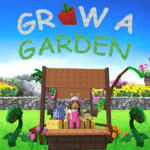Grow a Garden: Your Step-by-Step Blueprint for a Thriving Green Oasis
Gardening is more than just a hobby—it’s an invitation to create life, beauty, and nourishment right outside your door. Whether your dream is a balcony blooming with color, a backyard vegetable haven, or simply reconnecting with nature, gardening offers a deeply rewarding journey. But it’s not as simple as dropping seeds in the soil and hoping for the best. Success comes from planning, understanding your environment, and caring for your plants through every stage.
In this complete guide, you’ll discover exactly how to grow a garden that flourishes—from the first spade of soil to the satisfaction of harvesting your own food and flowers. No matter your space, budget, or experience level, you’ll find clear, practical steps to turn your vision into reality.
1. Know Your Space and Environment
Every great garden starts with understanding the ground you’re planting in—literally. Your space’s size, sunlight exposure, wind patterns, and regional climate all determine what will thrive.
Check Sunlight & Soil:
Most plants need at least six hours of direct sunlight daily. Spend a day observing where and when light hits your space. Then, test your soil with a simple pH kit to learn if it’s acidic, alkaline, or neutral.
Identify Your USDA Hardiness Zone:
This zone tells you which plants can survive in your area. For instance, tomatoes grow beautifully in zones 4–9, while citrus trees prefer 9–11. Planting outside your zone often leads to stunted growth or winter loss.
2. Define Your Garden Goals
Before you buy seeds or tools, decide what you want to achieve. A purely decorative flower garden? A vegetable patch to feed your family? A pollinator paradise for bees and butterflies?
Types of Gardens:
- Ornamental: Flowers, foliage, and landscape beauty.
- Edible: Herbs, fruits, and vegetables for your table.
- Pollinator: Native plants to support wildlife.
If you’re new to gardening, start small—container gardens or raised beds offer better soil control and less maintenance while you learn.
3. Design Your Layout
A well-planned layout avoids overcrowding, makes maintenance easier, and boosts productivity.
Draw It Out:
Sketch your garden on paper or use tools like
Plan-A-Garden to map beds, walkways, trellises, and seating areas.
Companion Planting:
Pair plants that benefit each other. Tomatoes love basil (pest control), and carrots grow better near onions (pest masking).
4. Prepare the Soil
Healthy soil is the foundation of healthy plants. Even perfect sunlight won’t save plants from poor soil.
Soil Types:
- Clay: Heavy, nutrient-rich, but slow-draining.
- Sandy: Fast-draining but low in nutrients.
- Loamy: The “gold standard”—crumbly, fertile, and well-draining.
Boost Your Soil:
Add compost, aged manure, peat moss, or worm castings. Test soil yearly and adjust as needed.
5. Select the Right Plants
Choose based on your goals, climate zone, and season.
Annuals vs. Perennials:
- Annuals (e.g., tomatoes, marigolds) grow for one season.
- Perennials (e.g., lavender, asparagus) return year after year.
Seasonal Timing:
Spring and fall are prime planting seasons—align with your local frost dates for best results.
6. Plant with Care
The planting process depends on whether you’re using seeds, seedlings, or bare-root plants.
Seeds: Start indoors 6–8 weeks before the last frost for long-season crops. Use trays, sterile potting mix, and plenty of light.
Transplants: Harden off young plants by gradually introducing them to outdoor conditions. Water before and after planting.
Direct Sowing: Beans, radishes, and zinnias can go straight into the soil once frost danger has passed.
7. Water and Feed Wisely
Your plants’ survival depends on balanced watering and nutrients.
Watering: Deep, infrequent watering encourages strong roots. Early morning is best to reduce evaporation and disease risk.
Fertilizers:
- Organic: Compost, fish emulsion, bone meal.
- Synthetic: Fast-acting but can build up salts—use with care.
8. Protect and Maintain
Keeping your garden healthy means preventing weeds, pests, and moisture loss.
Mulching:
Use straw, shredded leaves, or bark to suppress weeds, lock in moisture, and regulate soil temperature.
Pest Management:
- Organic solutions: neem oil, insecticidal soap, diatomaceous earth.
- Plant-based defenses: marigolds deter nematodes; mint repels ants.
9. Harvest with Precision
The reward for your work is fresh, flavorful produce and blooms—but timing is everything.
Harvesting Clues:
- Tomatoes: Fully colored and firm.
- Herbs: Pick before flowering.
- Lettuce: Harvest before it bolts for sweetness.
Preserve Your Bounty: Dry herbs, can tomatoes, or freeze fruits and vegetables to enjoy year-round.
10. Evolve Your Garden Year-Round
A thriving garden is never “done.” Keep it active and improving through all four seasons.
Year-Round Tips:
- Plant kale, spinach, and carrots in fall.
- Grow cover crops in winter to enrich soil.
- Rotate crops each year to maintain fertility.
Keep a
garden journal to track weather, yields, and lessons learned. Over time, you’ll become a more intuitive and skilled gardener.
Final Rating: 9.2/10
| Category |
Score |
Notes |
| Sustainability |
10/10 |
Eco-friendly and low-impact |
| Reward Value |
10/10 |
Beauty, food, and mental wellness in one hobby |
| Time Investment |
8/10 |
Regular attention required |
| Cost to Start |
7.5/10 |
Can be high initially, but pays off long-term |
| Learning Curve |
9/10 |
Beginner-friendly yet endlessly deep |
Final Verdict: Gardening is more than planting—it’s cultivating life, health, and joy. From the first seed to the last harvest, it’s a journey of patience, learning, and endless rewards. Whether it’s one tomato plant on your balcony or a lush backyard ecosystem, a garden will feed both your body and your soul.



























